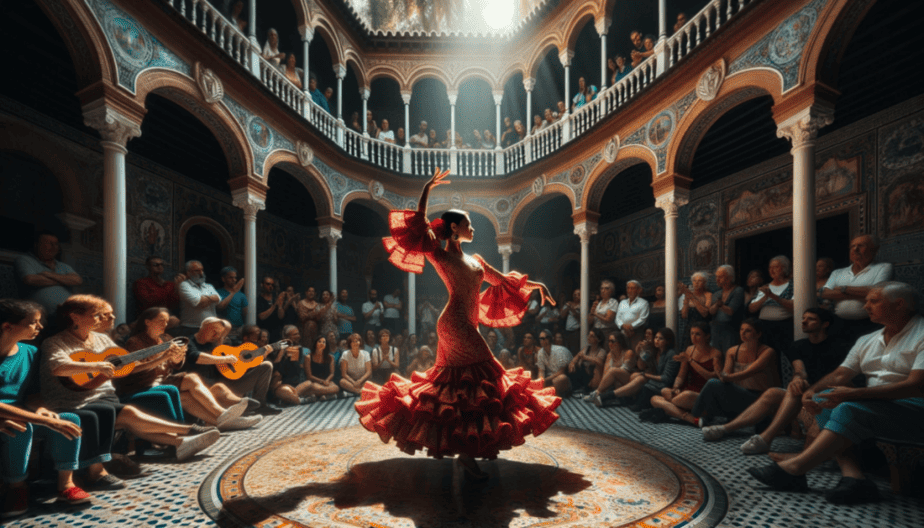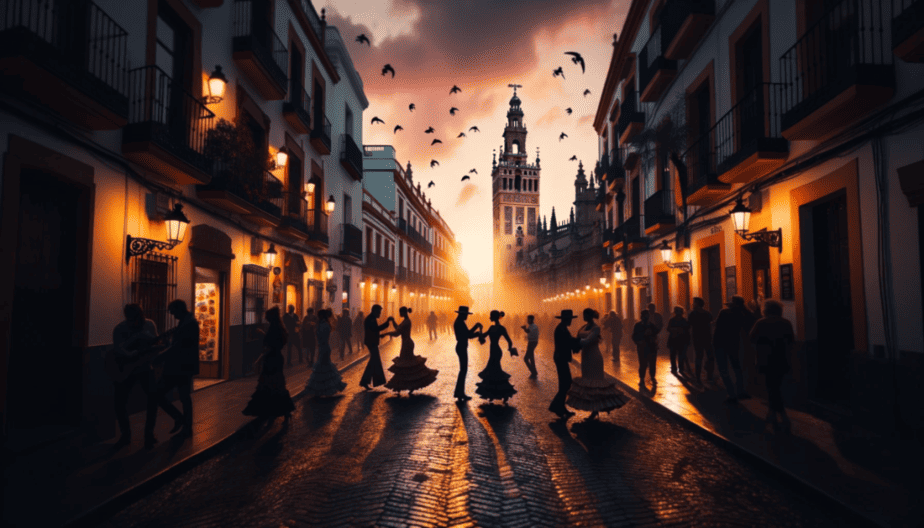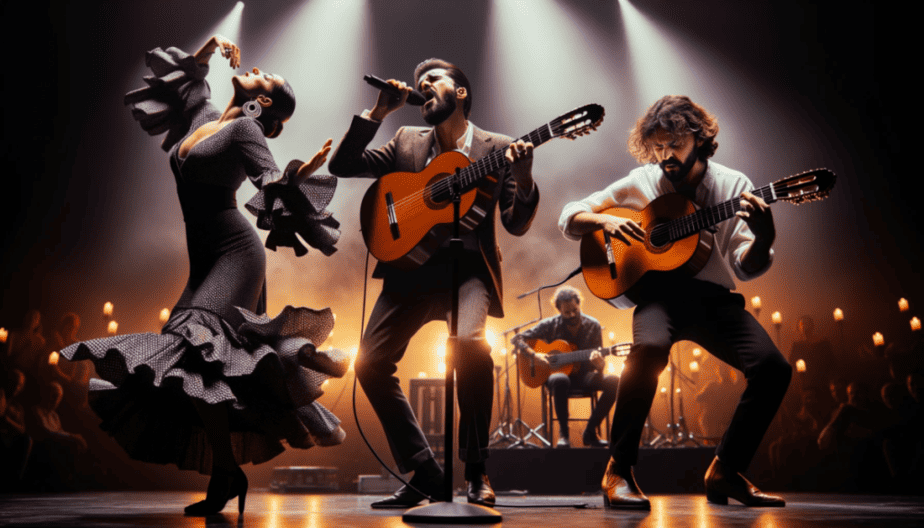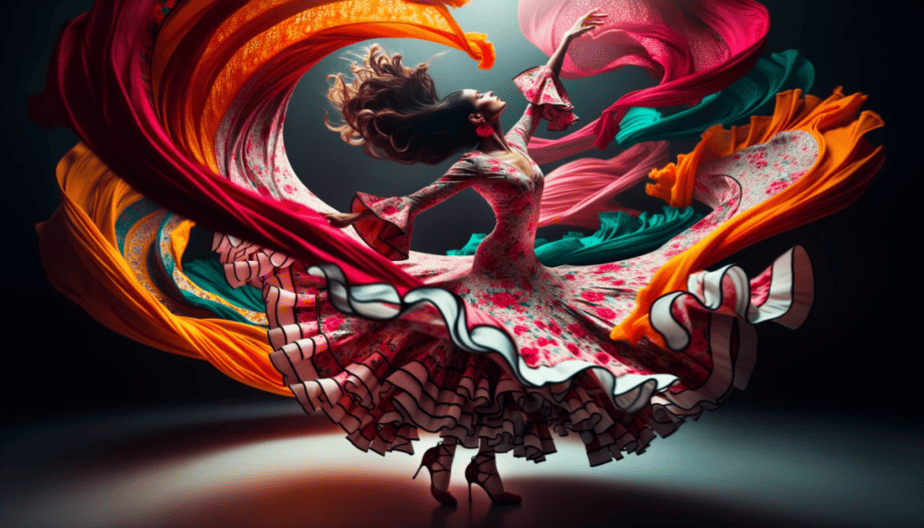Seville, the heart of Andalusia, is not just a city. It's an emotion, an experience, and a dance of passion known as Flamenco. As the cobblestone streets come alive with rhythmic claps and soulful guitar strums, one can't help but be mesmerized by the art form that has its roots deeply embedded in this region. But what makes Flamenco so enchanting? Let's journey through the streets of Seville and unveil its soul.

The Origins of Flamenco: A Historical Glimpse
Though synonymous with Spain, Flamenco traces its origins to the cultural melting pot in Andalusia centuries ago. A mix of Gypsy, Moorish, and Jewish traditions, Flamenco evolved as a voice for the oppressed, echoing their struggles and tales of love.
Over time, as cultures blended, so did the dance forms and musical styles, giving birth to what we now recognize as Flamenco. Today, it is a testament to Seville's rich history and enduring spirit.
While the exact origin remains a topic of debate, there's no denying the profound impact of diverse cultures, making Flamenco a dance that genuinely represents the essence of Seville.
The Three Pillars: Cante, Baile, and Toque

At the heart of Flamenco lie its three main components: Cante (singing), Baile (dance), and Toque (guitar playing). Together, they weave a story that transcends words.
The Cante is the soulful voice of Flamenco, ranging from deep sorrow to jubilant joy. It's an expression of raw emotion, often improvised and deeply personal.
Baile, the dance, is a visual spectacle. The intricate footwork, graceful hand movements, and fiery expressions make it a dance of passion and precision.
Lastly, the Toque adds rhythm and melody, with the guitar player not just accompanying but conversing with the dancer and singer, creating a harmonious trinity.
The Flamenco Dress: More than Just an Outfit
Walk into any Flamenco show, and you'll be immediately captivated by the vibrant dresses worn by the dancers. These dresses, known as "trajes de flamenca," are as integral to the performance as the dance itself.
Originally a simple dress adorned with ruffles, it has evolved, reflecting the changing fashion trends while retaining its traditional essence.
The swirling of the dress, the ruffles, and the polka dots all add to the visual appeal of the dance, making it a sight to behold.
Tablaos: The Theatres of Passion

Tablao, a traditional place where Flamenco shows are held, offers an intimate setting, bringing the audience close to the performers. Historically, these were the places where the art form was nurtured and perfected.
With dim lighting, wooden floors for the perfect sound, and a small stage, the focus is solely on the performers, making every emotion palpable.
While many tablaos cater to tourists, a few still hold onto tradition, offering a genuine Flamenco experience.
Flamenco Festivals: A Celebration of Culture
Seville bursts into colors and music during the Flamenco festivals. These events, held annually, attract performers and enthusiasts from all over the world.
From open-air performances to competitions, these festivals celebrate the evolution and diversity of Flamenco.
It's an experience of a lifetime, where one can witness the best of Flamenco right in its birthplace.
Modern-day Flamenco: The Evolution
While Flamenco holds onto its roots, it's not untouched by modern influences. Contemporary artists have blended jazz, pop, and rock with traditional Flamenco, giving it a fresh twist.
This fusion has introduced Flamenco to a global audience while sparking debates among purists.
Regardless of one's stance, there's no denying the creativity and innovation in the modern Flamenco scene.
Flamenco Schools: Keeping the Tradition Alive

For those smitten by Flamenco, Seville offers numerous schools to learn this art form. From beginners to professionals, these schools cater to all, ensuring the tradition continues.
Instructors, often accomplished dancers, impart not just the techniques but also the history and emotion behind Flamenco.
These schools stand as a bridge between the past and the future, ensuring that Flamenco remains eternal.
Flamenco Icons: Legends of the Art
Over the decades, numerous artists have left an indelible mark on Flamenco. Their contributions have shaped the art form from legendary dancers like Carmen Amaya to guitar maestros like Paco de Lucía.
Their performances, recordings, and teachings inspire generations, ensuring their legacy lives on.
With their unparalleled passion and skill, these icons have made Flamenco what it is today.
Book your Flamenco performance here:
Seville and Flamenco: Inseparable Souls
To truly understand Flamenco, one needs to experience Seville. The city's historic architecture, winding alleys, and vibrant plazas reflect the art form.
Every corner of Seville resonates with the rhythms of Flamenco, making it impossible to separate the two.
For travelers, Seville offers a journey not just through its streets but through the soul of Flamenco.
Conclusion: The Timeless Dance of Seville
Flamenco is not just a dance or a genre of music; it's the heartbeat of Seville. As you tap your feet to its rhythm, sway to its melodies, and lose yourself in its stories, you become a part of Seville's rich tapestry.
So, the next time you find yourself in this Andalusian gem, let the Flamenco guide your way, unveiling the soul of Seville one step at a time.
Author's Note: If Flamenco resonates with your heart, Seville awaits with open arms. Dive deep, explore, and let the dance move you.
Read also: The Best Flamenco Shows in Seville
